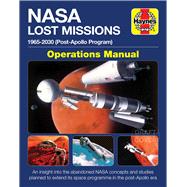NASA Lost Missions Operations Manual 1964-1975 (abandoned human spaceflight proposals) * An insight into the cancelled NASA concepts and studies planned to extend its space programme in the post-Apollo era

NASA Lost Missions Operations Manual 1964-1975 (abandoned human spaceflight proposals) * An insight into the cancelled NASA concepts and studies planned to extend its space programme in the post-Apollo era
- ISBN 13:
9781785212116
- ISBN 10:
1785212117
- Format: Hardcover
- Copyright: 05/18/2021
- Publisher: Haynes Publishing UK
Rent
Sorry, this item is currently unavailable.



